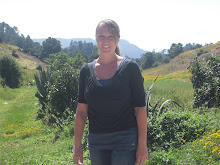I was given a wonderful opportunity in December. Proderecho, the organization in Oaxaca that has helped to connect me to the people and agencies responsible for juvenile justice here, invited me to participate in a course entitled “Seminars on Trauma and Resilience.” My classmates were a group of inspiring women, and two men, working in NGOs in Oaxaca, and in the state prosecutor’s office. The facilitators of the workshop were from Eastern Mennonite University in Harrisonburg, Virginia.
The central emphasis of the seminar is that trauma – when unresolved – leads to the infliction of further pain. This pain can be manifested internally – in the form of depression, self-harm, anxiety, relationship problems, and emotional difficulties. It can also be manifested externally, and can often cause those who have been victimized to act out towards others as victimizers.
Paying attention to the needs of victims of crime, as well as of natural disasters and other traumatic situations, is therefore critical in order to reduce cycles of violence. Unfortunately, the needs of victims are often overlooked in traditional criminal justice approaches to crime. We focus on identifying the perpetrator, prosecuting him or her, and punishment. Rarely are the needs of victims considered through this process. Prosecutors represent the state, not victims. Victims are often invited to court just to provide their testimony, not to offer input about how they would like to resolve the situation, or to express how the state could best meet their needs. For more information, check out: Link to Video of STAR model re Trauma
I think, for example, of a young man who I worked with in Los Angeles. He was a passenger in a car that got into a horrific accident. One of the other passengers, who was also his best friend, died in the accident. It was bloody and traumatic. The driver was drunk, and was prosecuted in court. The young man I knew was traumatized and had frequent flashbacks of the event that disturbed his ability to function. He was subpoenaed to court as a witness. He didn’t want to go, but was threatened with being sent to jail if he failed to appear in court. On the witness stand, he was forced to look at graphic photographs of the event, resulting in even more negative effects on his mental health. He was never asked what he needed in this process.
How would our criminal justice system be different if we prioritized the needs of victims? Restorative justice approaches do just that – the opinion, needs, and desires of victims are the driving force behind how a particular harm is addressed. As part of Mexico's changing criminal justice system, victim's needs are being considered. In many cases, victim's rights are being incorporated into the Penal Code and Procedures in a more inclusive way than in California, for example.




